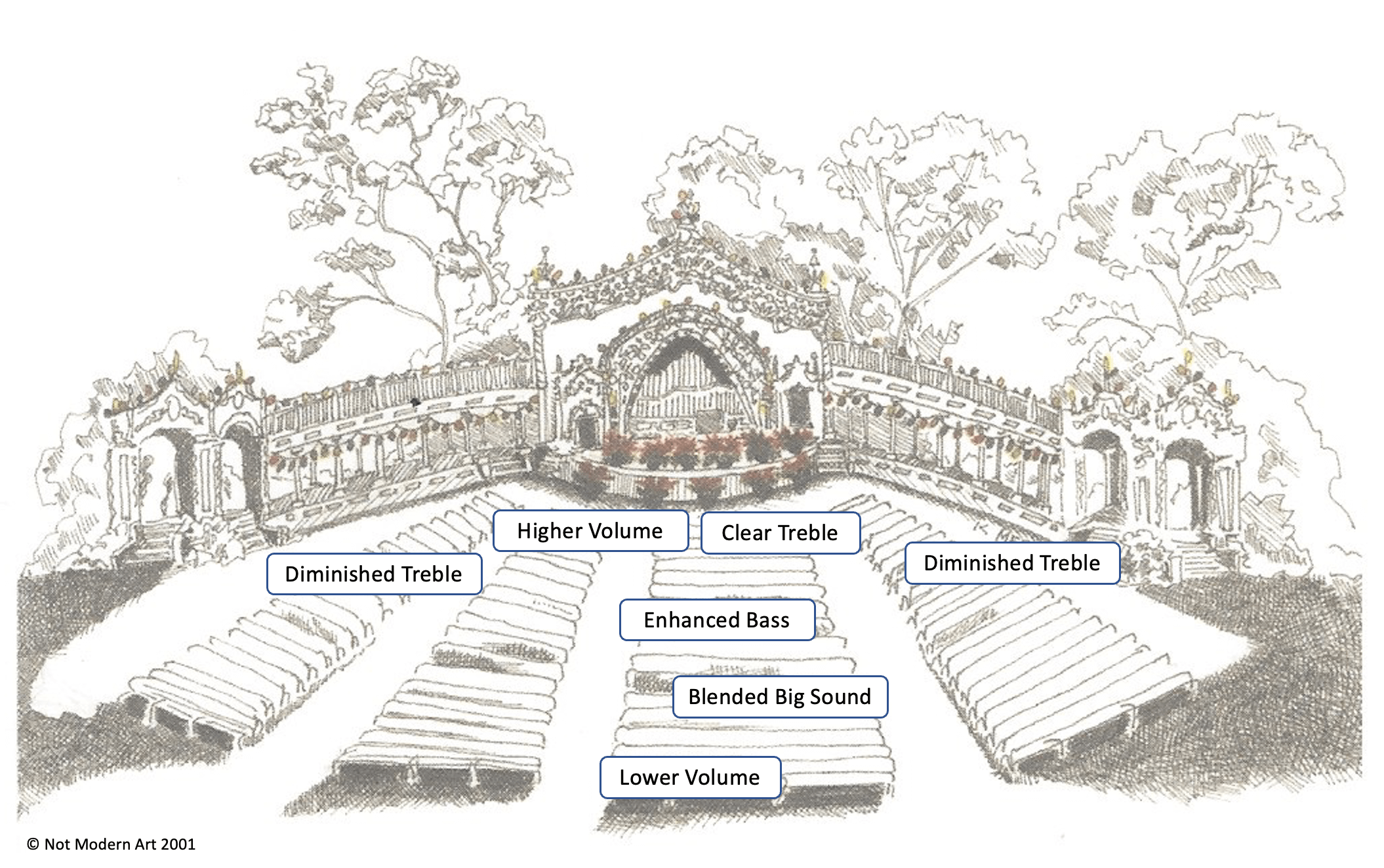SOS-0010 February 2023 – Listening Fun with Pipe Organs
February 2023 – Listening Fun with Pipe Organs
by Gordon W. Stanley
One of the really special things about the Spreckels Organ Pavilion is that the seating is not assigned. Therefore, you can move around from concert to concert, or even during a concert. The result? You have the opportunity to hear the music from different perspectives. Try doing that at the Symphony. You would either spend a fortune in tickets, or really upset the ushers.
To help you make the most of your audio experimentation, we've included a map above ( artistry by Karen Merry ) and some instructions on where to sit to fine-tune your Spreckels Organ Pavilion listening experience.
For the very deepest bass, try 6th row center. Here you'll feel the impact in your chest from the largest 32-foot pipes.
If you like a well-balanced, large organ sound, have a seat two-thirds of the way back in the center. Here the organ will sound its largest, and in my opinion, offer the most blended and beautiful sound.
If you prefer to hear delineation or separation between the high and low frequency pipes, move closer to the stage - even as close as the front row. The organ won't sound as large, but you'll notice the clear delineation in the flutes, and some of the other higher frequency tones from the pipes.
As we get older, experiencing hearing loss or even tinnitus, high frequencies may bother us. If this describes you or someone else in your party, we recommend a move toward the edges of the audience. Here the high-frequency sounds are softened.
As an audio engineer, the very best time for recording is at nighttime. We center our microphones on the pipes, at the front edge of the stage, about 25 feet in the air. At this position, the pipes sound large, with a rich full blend of all frequencies. At minimum, we use a pair of omnidirectional mics to create a nice even blend of those juicy low-frequency tones. Should we move our microphones away from the pipes, our recording is subject to more interference from any ambient sounds in the Park.
Being a slightly obsessive audio perfectionist myself, I continue to experiment. One of my more recent discoveries involves blending together a pair of omnidirectional mics with a pair of cardioid mics. In doing this, I can achieve both the separation, and the blending of the low frequency sounds, and the results are very realistic. And finally, one of the inspired techniques a friend of mine, Cookie Marenco, engineer and owner of Blue Coast Records, shared is to take a small notch of about three or four decibels from the frequencies around 250 Hz. This is an area where the organ has a slight bit of congestion, and Cookie's technique actually increases the separation. It makes the recording sound much closer to what the organ sounds like live.
I hope you've enjoyed this audio overview of the Spreckels Organ Pavilion, and will take an opportunity to try moving around the audience listening areas yourself – let yourself hear the organ from different perspectives.
Visit us this Sunday, or next. Or both. Or during our Monday night Summer Organ Festival to enjoy, and to train your ears to appreciate the variations in the sound. Every seat is a premium seat, and now you can select the one best for you. And, as they've been for the last 108 years, all concerts are provided at no charge.
